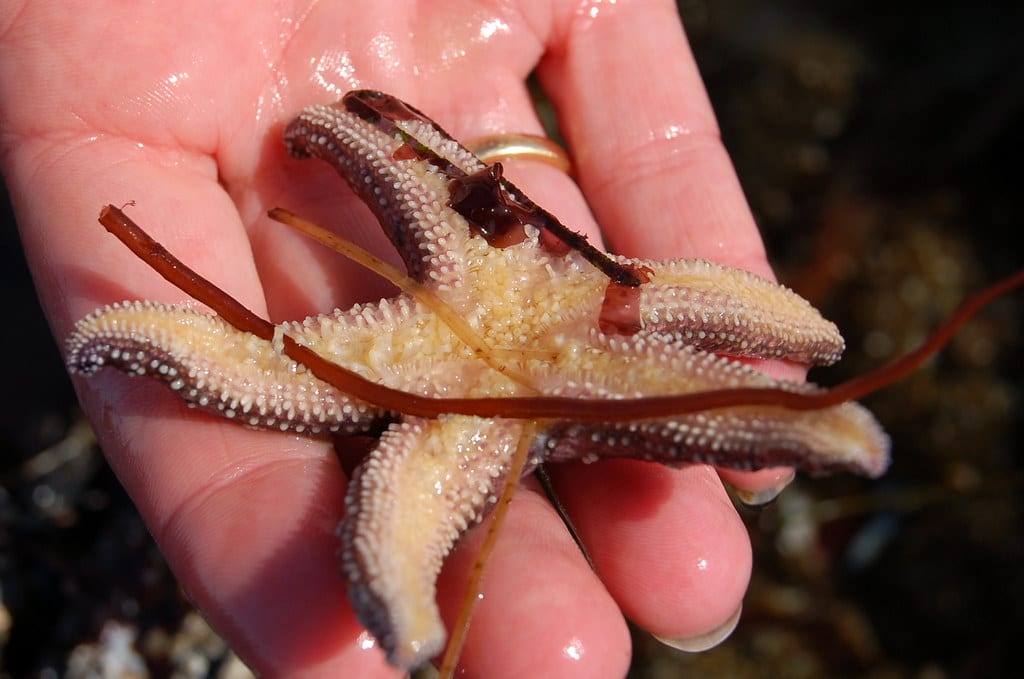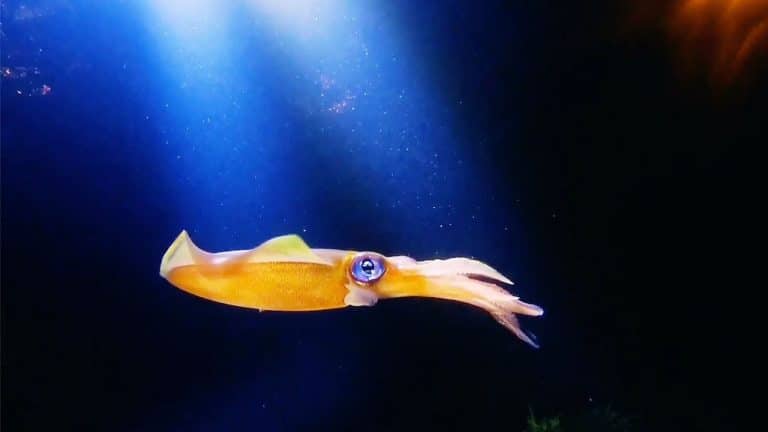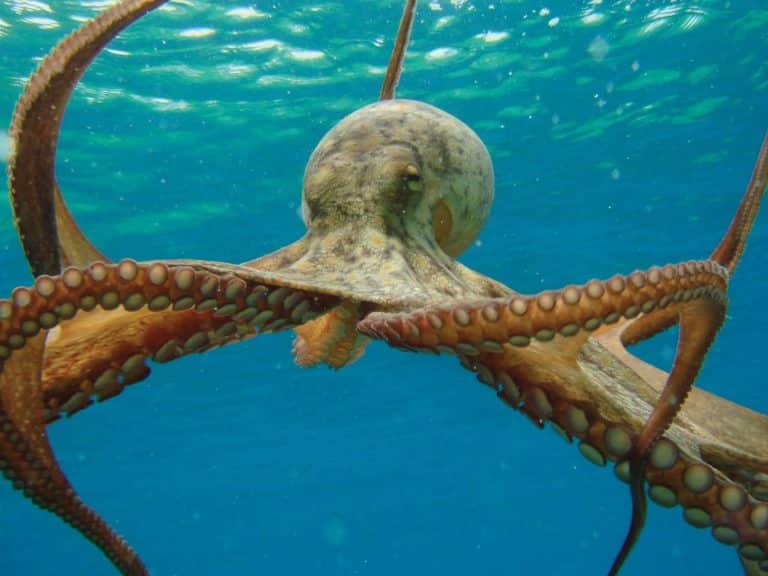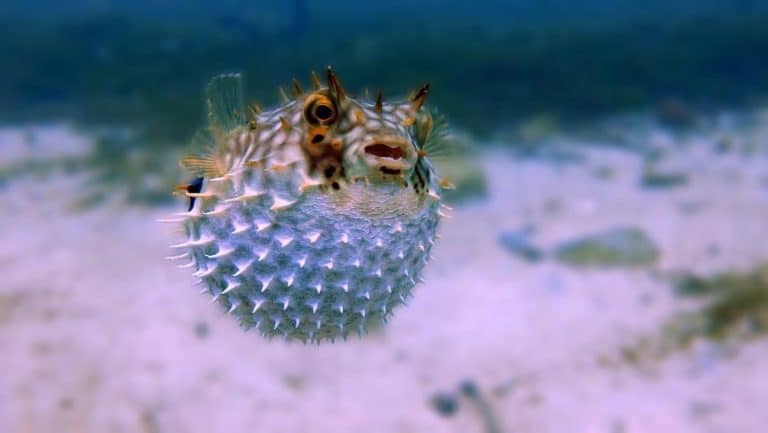Startling Starfish: 15 Amazing Facts
Starfish, also known as sea stars, are marine animals. Over 2000 species of starfish have been identified, and Starfish color varies according to the species.
You would think it is a fish since the common name also has the term ‘fish.’ But in scientific classification, it is not a fish.
Interesting right? This creature is full of such surprises. Nature never fails to amaze us.
They have the unique regeneration ability and do not possess brains and blood. Even without brains, they have a commendable nervous system that enables them to make decisions.
If you are curious about more such amazing and not widely known facts about starfish, keep reading!
Amazing and Startling Facts About Starfish
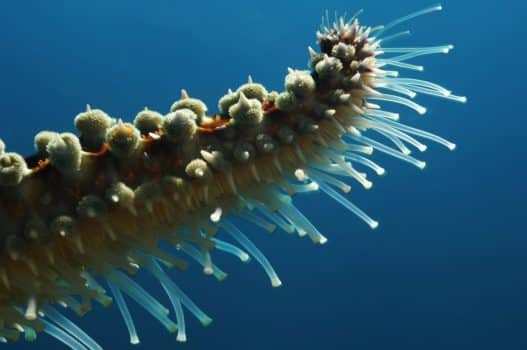
1. Starfish is Not a Fish
That’s correct; a starfish isn’t a fish. A fish has certain identifying characteristics, such as gills for breathing, scales on the skin, and fins for swimming.
Starfish lack all these. The term starfish can be misleading; hence, people prefer to call these creatures sea stars.
Sea stars are classified under the phylum echinoderms. They display the characteristic feature of echinoderms, i.e., the use of tube feet for movement in water.
Echinoderms are exclusively marine animals with spiny skin. They are invertebrates, i.e., they lack backbone.
2. Starfish is Capable of Regeneration
Regeneration is the ability to grow back lost part of the body. Sea stars are among the few animals that possess this unique ability.
The ability to regenerate is useful to starfish when its arm gets amputated. The arms can get separated from the body while hiding and saving itself from a predator.
The process of regeneration takes time. It can take from months to years to fully grow back amputated arms.
Regeneration of an amputated arm is cool. Another interesting aspect of this regenerative ability is that
Did you know that if the cut arm is not harmed, it can grow into a genetically same starfish? Pretty cool, right?
3. Starfish is Predominantly Marine
Starfish is aquatic, but it is also predominantly marine animal. It means that starfish can not live in freshwater.
This is why starfish are only found in seas. Saltwater is essential for their survival.
Their complex internal balance of electrolytes is done with the help of seawater. Seawater helps starfish in many essential bodily functions.
Apart from maintaining the electrolyte balance, seawater also helps starfish move. We shall read about that in detail later in this blog.
Seawater also helps circulate essential nutrients to various organs of the body.
4. Starfish Lack Blood
These incredible creatures have ways to survive without blood circulating in their bodies.
Even though starfish lack blood, the seawater is utilized for circulation inside their bodies, performing functions similar to that of blood.
Seawater facilitates the circulation of key nutrients to organs of the body, thereby facilitating the organs to function properly.
5. Brainless Creatures
However bizarre it may sound, starfish do not have brains. Despite lacking a brain, the nervous system of starfish is quite impressive.
They use their nervous system for basic functions such as staying alert from predators and sensing food nearby.
This system of nerves enables them to make decisions. Even without a centralized nervous system like ours, they efficiently carry out all the essential functions.
Their nervous system is not centralized, i.e., it runs throughout their body. As it is very evident, being brainless does not equate to being stupid here.
Starfish are truly remarkable creatures of the marine world!
6. Starfish isn’t Always Star-Shaped
Since the most common species of starfish are shaped like stars only, they are referred to as starfish.
But it is not necessary that a starfish will have 5 arms and will look like a star.
Some species of starfish have more than 5 arms. The number of arms among starfish species varies from 4 to 40.
Though a starfish has 4 arms, is square-shaped. These species are rare.
For example, a starfish, such as the cushion starfish, has the genetic information to be classified as a starfish, but it looks like a blob.
Hence, starfish come in diverse shapes, sizes, and colors. Starfish color also varies depending on the species.
7. A Unique Digestive System
As remarkable as these creatures are, their way of engulfing and digesting food is also unique.
Starfish use their arms to hold their prey/food. After having a good grip on it, the stomach comes out, and digestion occurs outside the body.
After digestion of food outside the body, the stomach goes back in.
Their stomach comes out and goes in through their mouth opening.
8. Tough Outer Skin
The outer skin of starfish is made up of calcium carbonate. Calcium carbonate skin provides toughness.
This tough outer skin protects predators.
Since there are numerous species of starfish, some of these have gone a step further to protect themselves from predators.
Some species have spines on this calcium carbonate outer layer. These spines and the tough outer layer act as armor against predators.
9. Presence of Eyespots
Isn’t it fascinating how starfish lack brains and blood but have something for visual aid?
In layman’s terms, it is said that starfish have eyes. But those are not actual eyes. Starfish have eyespots.
Now, you might be wondering what the difference is between the two. Eyespots, unlike our eyes, can differentiate between changes in brightness of light and shades of light.
These eyespots enable starfish to navigate underwater. These also come in handy in saving themselves from predators and catching the prey for feeding.
These eyespots are present on the end of each arm and look like red spots. As mentioned above, starfish have arms ranging from 4 to 40 in number. This means they have as many eyes as they have arms.
10. Moving Around
Starfish make use of a structure called the tube feet for moving. Tube feet are located on their underside.
Another structure on the top called the madreporite, brings in seawater.
The tube feet are present in hundreds of numbers. These are filled with seawater, which enables the starfish to move underwater. It is because of these tube feet that starfish move very fast.
11. Their Primary Food
We have read about their unique way of feeding upon their prey above. But what exactly is starfish’s food?
Their primary food consists of corals, clams, small fish, snails, and barnacles. Therefore, a starfish is a carnivorous creature.
Some species of starfish do not find prey for food. For instance, Cushion Starfish is gentler than other species.
Cushion starfish do not hunt for food. Instead, it feeds on detritus and plants.
12. Lifespan
Starfish can live up to 35 years of age. This is the average lifespan for starfish. Variations occur from species to species.
Usually, larger starfish species live longer than the smaller ones.
But this lifespan only exists in conditions where starfish do not become another creature’s prey. Sea creatures like turtles, seals, and crabs feed upon seastars.
Some species of seastars also feed upon other species of seastars. So, in practical terms, a seastar living up to 35 years is very rare.
13. Reproduction
These organisms have two ways to reproduce. We have already talked about their regenerative ability.
The ability to regenerate a lost arm or to grow into a complete starfish from the lost arm is asexual reproduction.
But this asexual reproduction can only occur in conditions where food is present in abundance, and the environment is not stressful.
These organisms can also reproduce sexually. However, fertilization does not occur inside the body. Instead, they release their gametes in the surroundings. After fusion, these become swimming larvae.
These swimming larvae eventually settle on the ocean floor and grow into seastars.
14. Important for The Ecosystem
Seastars are important for controlling the numbers of their prey population. Starfish usually make those animals their prey with no other natural predators.
If seastars vanish from the ecosystem, it will create an imbalance in the proportion of other species. An imbalance in the proportion of species in an ecosystem can lead to the collapse of the ecosystem.
15. Starfish as Food
Some species of starfish are poisonous. It is advised that only professionally sourced starfish should be consumed.
Nevertheless, many species of starfish are edible too. Some countries such as China, Japan, Thailand, and Indonesia sell seastars as food.
Seastars are not consumed raw but rather boiled or deep-fried. It is said that seastars do not taste anything like regular seafood. Seastars have a salty and creamy taste. For most people, it is an acquired taste.
Summing It Up
Starfish look appealing and are unique creatures in many ways. There are so many startling facts that can blow your mind.
For starters, starfish are not actual fish! These peculiar creatures are predominantly marine and can not survive in freshwater.
They lack eyes like us, but they have eyespots on the ends of each arm. Speaking of arms, they can have 4-40 arms, depending upon the species.
Due to this, starfish are not necessarily star-shaped. Variations are seen from species to species, and there are more than 2000 species of starfish. Starfish color is also diverse, like the number of arms and sizes!
Of course, these are just some interesting facts about sea stars. Which fact did you find the most intriguing? Let us know in the comments section below!

